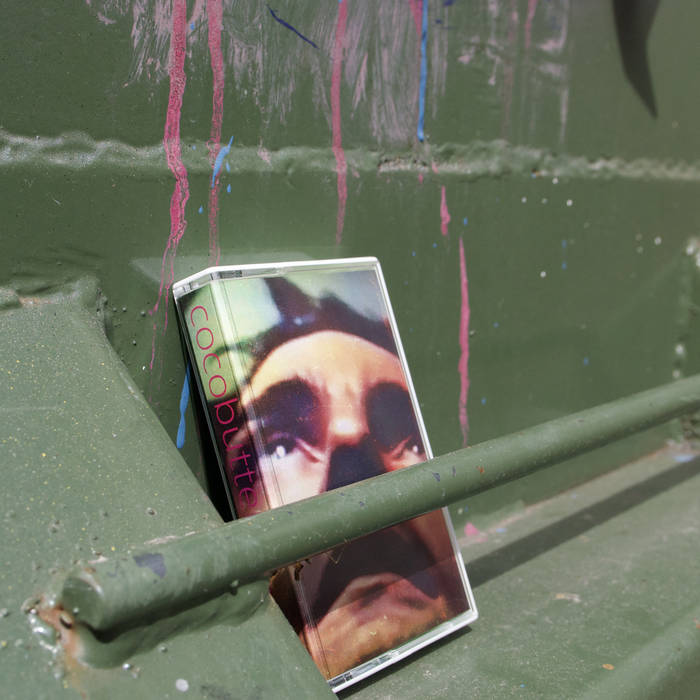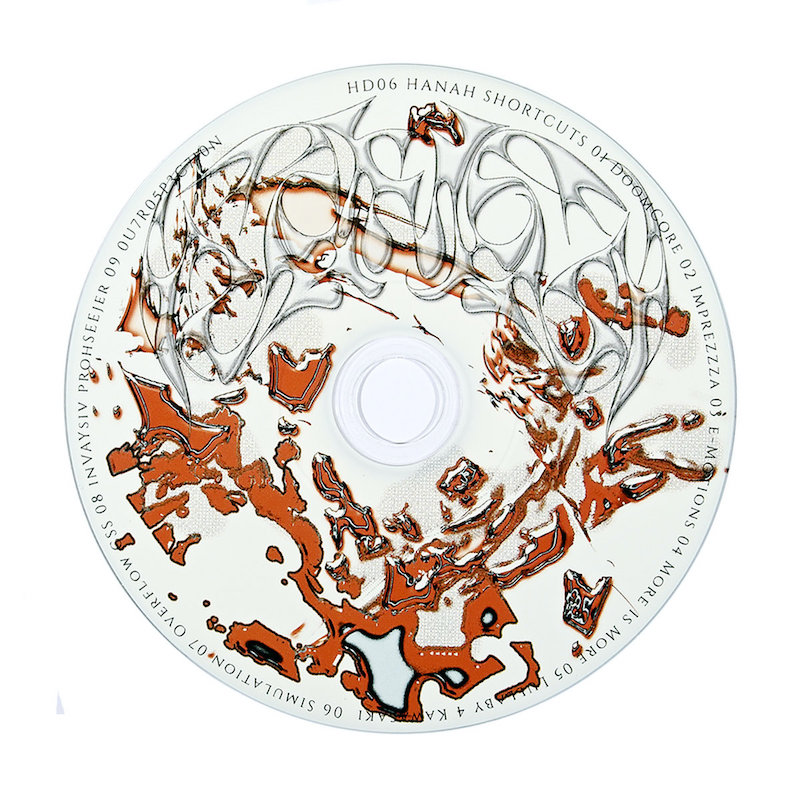It's September and another Bandcamp Friday is upon us, so here's another list of recommendations from the Perfect Circuit staff. All proceeds from sales today will go to the respective artists/labels, so take some time to go check things out. You might just find something that you really love! That said—here's some of the Bandcamp music that we've been digging into lately.
Ciat-Lonbarde Compilation: cocobutter
If you frequent synthesizer-related social media, chances are you've come across the occasional video featuring curious wooden devices, often laden with banana jacks, strange names, and a particular sonic and visual aesthetic with an air of experimentalism. Indeed, the Ciat-Lonbarde instruments, just one subset of creative contraptions available from the Synthmall of now Berlin-based designer Peter Blasser, promote a workflow of exploratory patching and an acceptance of the resulting quirks and happy accidents. Many of the designs within these instruments are highly refined iterations of Blasser's earlier paper circuits—hand-drawn schematics of analog circuits that could be easily built and combined together in a DIY-fashion, often within a repurposed object like a briefcase. Today, Ciat Lonbarde exists as a prebuilt and more feature-filled extension of those paper circuits, maintaining a sound that's in some ways reminiscent of the primordial era of electronic music, while still being fully unique in itself.

As a celebration of these profoundly unique instruments, Cocobutter is a compilation record organized by Jae Ryan, who both creates music under the name Samuel Edmund and hosts a Ciat Lonbarde-centric podcast called "The Deerhorn." Given the association with the podcast, all of the featured artists were either guests on the show or friends within the greater world of Ciat Lonbarde aficionados. Although there's certainly some diversity to be found in the tracks submitted to the album, Ryan did define a handful of constraints for each of the artists to give the final release some cohesion. Notably, all sounds were to come from a Ciat Lonbarde instrument, any looping or sound-on-sound layering done purely with a Cocoquantus (Ciat Lonbarde's dual 8-bit looper and five-part chaotic oscillator bank), and performances captured to a single stereo file with no overdubs.
The resulting tracks both showcase the individual voices of each artist while serving as an excellent taster for the sound of Blasser's instruments for the uninitiated—one that's fairly different from that of East Coast or various subsets of West Coast synthesizers. In fact, one could easily point to specific tracks on Cocobutter to highlight specific elements of the Ciat Lonbarde vernacular. The opening track "Nostos Algia" by Noctopolis immediately introduces the crispy, low-fidelity character of Cocoquantus loops, while "Seeker" and "Weeping Rhythm" from Jungle of Wires and Sweetearthflying respectively showcase the slipping-rhythm and Relabi tendencies of Plumbutter, Blasser's so-called "drum and drama machine." Fans of drone and ambient may bask in tracks from FernLodge and Paperbark, while "Crux" from CrücFX isn't afraid to venture into grimier and grittier territories.
Just as with any synthesizer or electronic musical instrument, from Moog and Roland to Buchla and Serge, the sounds and possibilities of these creative machines are endless worlds for artists to explore, not limited or constrained by perceptions of genre. Cocobutter proves this is especially true here, presenting beautiful music made by artists sharing a common affinity for Ciat Lonbarde instruments.
Classic Combinations, Soft Textures: Yumi Iwaki's Juniper

The latest batch of releases from Nara, Japan-based label, Muzan Editions, features Juniper from Japanese artist Yumi Iwaki. Field recordings and synthesizer blend together in beautiful harmony creating delicate spaces that evolve and float away like a dense cloud on a sunny day offering welcomed reprieve from the light. Looking at Iwaki's Instagram feed gives you a small gpeak behind the curtain showcasing her sketches and ideas which makes revisiting this album an enjoyable experience. As many modular composers know, each patch which becomes track is lived with, studied, and cared for like a living being. One version informs the next, which evolves iteration after interaction to a single performative gesture.
Each gesture on Juniper feels well-thought-out and evokes a feeling of play. Track 2, "Mosaic," is an excellent example of this: the skittering, percussive pops, a warm, crunchy field recording, and warbling piano samples weave together in a way that feels meticulously serendipitous. The eponymous track, "Juniper," opens with a soft brush secret and builds with an interlocking sequence, soaring piano, and sporadic resonator tones. Towards the middle of the track, we are greeted with a deep forest ghost: granular, ethereal vocals haunt the track as the phase shifts slowly to a swirl of piano and vocals at the end. The entire album is an ambient marvel and can softly purr in the background of a gentle day for hours.
Menacing Grooves: Hanah's SHORTCUTS
Hanah's album SHORTCUTS is a beautiful and grotesque metamorphosis, providing eerie and menacing introductions that lay a foundation for unsettling yet grooving beats to vibe to. Hyper-compressed percussion, distorted vocal chops, and reverb-drenched pads shift into earth-shattering kicks and basses, such that each track leaves only a husk of itself by the end. The tonal nature of the drums and transients with the altering nature of the synth motifs blur the lines of which is which, creating an oddly cohesive wall of sound with overwhelming lows and crisp, sparkly highs. The void left by a lack of harmonic progression is filled with evolving textures and granularized glitches, providing interest to what otherwise would be simple ideas.

Never a dull moment, Hanah takes you on a never ending upward hill of uncertainty and intensity through exaggerated processing that is intentionally abrasive and toxic. The constant building of energy and tension provides thematic vibes similar to those of a horror film, where the pull and push of percussive elements keeping you on your feet is like awaiting the arrival of a jump scare, never quite knowing when the calm will come. Tracks like "Imprezzza" and "e-Motions" pitch shift, stretch, and apply loads of effects to synths with results that are guttural and talkative, reminiscent of the stylings of the late and great SOPHIE. Hanah wrote on this idea of an unrestricted usage of effects, reflecting "the question of our impermanence, desired immortality, our substitution to data hungry AI that will compose tomorrow's music, and becoming the spectator of our own defeat." These reflections can be heard throughout the track "inVAYseev prohSEEjer," forcing and fiddling with samples, percussive patterns, and massive kicks until the desired breakbeat pattern is achieved, as wonky as the journey and outcome might've been.
SHORTCUTS as a whole is a destructive take on a multitude of genres, bending all the rules of mixing and creating maximal sonic landscapes over minimal structures. It's a vitriolic view on what the future of music and the world can expect from the path we're heading toward.
Space + Closeness: Claire Rousay's a softer focus
Using field recordings as part of the compositional process isn't a new undertaking. In fact, the idea of field recording has embedded itself in the world of music-making and documentation since the earliest recording technologies became available. Entire genres of midcentury electronic music hinged on the transformation of field recording and found sound into otherworldy textural collages—in the '80s and '90s, samplers encouraged musicians to turn the sounds around them into rhythmic patterns and melodies—and today, when Zoom field recorders are so accessible and affordable, an entire new wave of musicians have ventured out of their studios and into the world to find their own personal musical voice.

In 2021, Claire Rousay is perhaps one of the most interesting such musician. In her own words, her music "zeroes in on personal emotions and the minutiae of everyday life—voicemails, haptics, environmental recordings, stopwatches, whispers and conversations—exploding their significance." And indeed, much of her music is about using field recording techniques to magnify the mundane and familiar, creating a heightened sense of tactility and even intimacy, or recontextualizing them entirely.
a softer focus diverges from some prior releases, stepping more deeply into song-like, pop-like structures—layering ambient environmental recordings with slowly-evolving chords, bowed strings, noisy chatter, and indistinct auto-tuned ramblings. While it's far from a radio-ready formulaic record, you can hear pop music's influence commingling with Rousay's patient, engrossing, and deeply visceral textures throughout. And while none of this should come as a surprise to those familiar with her earlier works, the synthesis of elements in a softer focus feel very special and finely tuned: each drip, processed squish, distant television, slow chord, and cello harmonic fits together with ceaseless motion. Put on some headphones, close your eyes, and listen as it all passes by you.
Spacious, Grotesque, and Humorous: Tender Buttons's an established color and cunning
There's a peculiar subculture of free improvisors in California, many of them defected jazz musicians, many of them involved in academia, many of them "contemporary Classical musicians" (geez what a combination of words). Many of them orbit around educational institutions like Mills College and CalArts, and because of these schools' focus on experimental electronic music, many of these musicians have in one way or another breached into the world of modular synthesizers. The ramifications of Serge, Buchla, and countless Bay-area-bred computer music weirdos' influence in the local music scene play out to this very day.
If you're at all involved in the weird world of experimental electroacoustic improvisation in California, you probably know Tender Buttons—even if only as individual musicians. This particular assortment of delightful weirdos is comprised of Tom Djll, Gino Robair, and Tania Caroline Chen, and for me, they encapsulate everything that is great about this entire musical microcosm.

In Tender Buttons, Djll contributes a peculiar and skillful blend of trumpet extended techniques and an assortment of electronics, from modular synthesizers to odd desktop devices. Robair similarly combines similarly-spirited electronics with percussion—which, for the purposes of this type of music, can mean anything from drum kit to a tabletop of household items. Chen, a splendidly gifted pianist, contributes everything from percussion to Cage-esque piano preparations (and perhaps ping pong balls?)...and together, they form a peculiar tapestry of sparse, tonally ambiguous textures to distorted cartoon-like gurgles and chatter, unrestrained howls, and bombastic, colliding motoric rhythms.
Their most recent release, an established color and cunning, a collection of fascinating improvisations, highlights these musicians' curious nature and unconventional approach to all of their instruments. And not only that, it reveals to me quite clearly a powerful skill valued and intentionally cultivated by many musicians of this sort: the ability to listen. Often playing out like a mysterious and unrelated set of distinct events haphazardly twisting and conjoining one another in unexpected ways, an established color and cunning is full of delightful sonic coincidences, uncanny textural juxtapositions, and a skillful sense of patient sonic development. Pay close attention and you'll quickly realize that there are many ways to listen to this music, each revisit revealing a new set of sonic relationships from grotesque to humorous.








